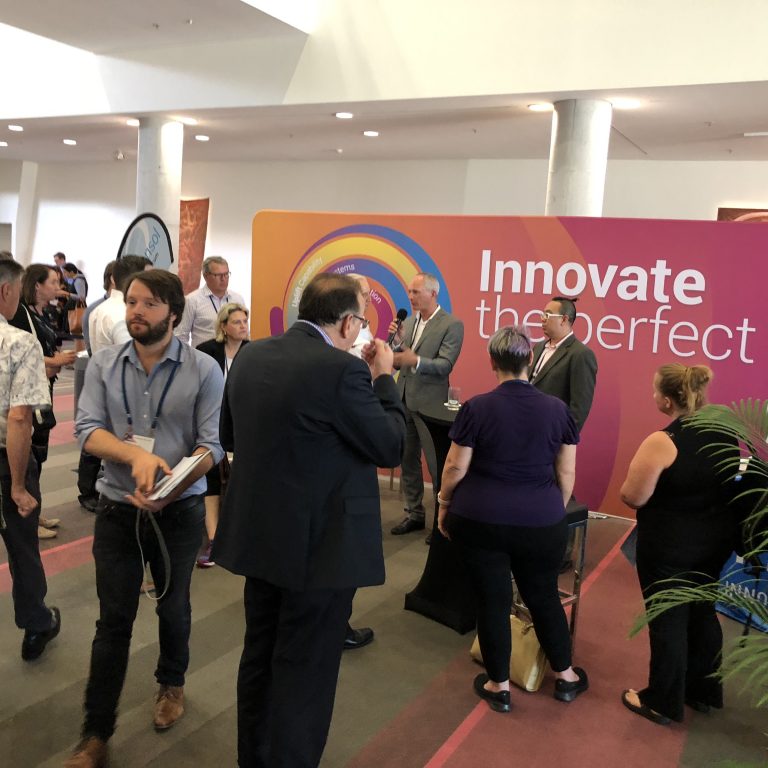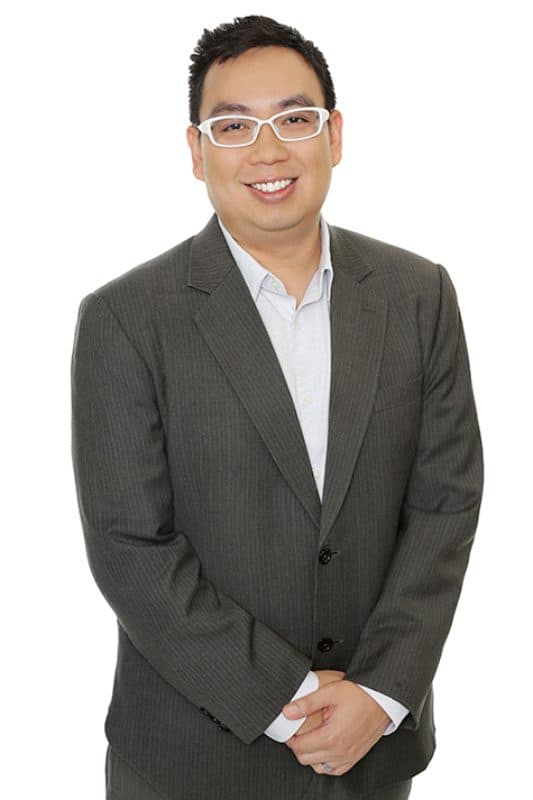August and September have turned out to be innovation and digital strategy conference and event months for me. Tripping between Brisbane and Sydney I’ve attended several interesting conferences, workshops and forums including the first event in the David & Goliath series, the CEDA Innovation Series lunch in Sydney, the PwC Digital Strategy of the Future evening in Brisbane, the Queensland Government Digital Strategy Launch and then most recently last week, the 2-day Chief Innovation Officer Summit in Sydney.
The innovation and digital strategy space is indeed noisy! Not to mention, start-ups – of which David Gollan, HBF CIO says there are something like 5 new ones every week. There’s even an app now to track start-ups. What’s more, we keep seeing the founders and key people from the growing number of incubator/innovation spaces joining the corporates at the innovation and digital strategy events. Fishburners, Little Tokyo Two, Firestation101, River City Labs, FusionLabs, etc… Several big companies are collaborating with start-ups as well. At the David and Goliath initiative, BOQ, CUA and Telstra, all talked about how they collaborate. It’s likely that lots of noise means lots of dollars spent on innovation… But is it money well spent, I wonder…
Coming back to my thoughts and learnings. A lot can be said and I’ve personally learnt many lessons from my peers during the past few months of events in this area of innovation and digital strategy. However, there are three consistent themes running through all the events. Some more prevalent than others. Here they are:
1. Culture culture culture!
As famously said by Peter Drucker, “Culture eats strategy for breakfast!”. This is so obvious in all the discussions at the events.
Two of the three speakers at CEDA spent almost all their time talking about the importance of culture in innovation. The founder of Chobani yoghurt, especially, said that culture is what makes his organisation so innovative (Pun intended). And it starts from the top! His vision is made known to his entire organisation and he cultivated the culture within his organisation to be innovative from the start – starting with himself as the visionary.
An organisational culture that is aligned to the vision of its leaders, like the example of Chobani seems to be the first step in any innovation initiative. Innovation started “just because everyone else is doing it” is not the right reason to start. The amount of passion to innovate must flow down from the top. It’s therefore refreshing to see the Queensland Government is taking steps in the right direction with the launch of their Digital First strategy earlier this month. It starts from the top. Now, it’s not all rosy from there though. In the case of the Queensland Government, they did admit at the launch that they are acutely aware that the culture within government often impedes their innovation initiatives. They are taking steps to change that though, starting with changes to Procurement practices with the new QITC Framework. It’s exciting to be doing business in Queensland at the moment with so much activity going on. The eHealth Digital Innovation Strategy, Advance Queensland initiatives, Smart cities investments and more.
This is why I’m also excited to engage at the BiiG conference next month to discuss all the current issues Queensland Government is facing for this new future of innovation. Check out the details of the event here (I’m on a panel facilitated by Peter Bradd, and Procensol is exhibiting our Innovation and Transformation Framework, the MBT Framework).
2. Collaboration
“We are in the Golden Age of Collaboration” – Ryan Hunt, News Corp.
You can’t talk about innovation these days without also talking about collaboration; and this was certainly the case during the conferences of the last couple of months. Large corporations want to and are actively engaging with the Start-up community (the progressive and innovative ones at least). Some examples (Telstra Ventures, BOQ at David Meets Goliath, CUA at the Chief Innovation Officer (CINO) Summit and many more examples…). There were even two panel discussions at the CINO summit dedicated to talking about better collaboration. It is interesting to note that at these events, it’s no longer talking about “should we collaborate”, it’s all about “how do we do it better”. To me, this means a few things:
- It’s no longer about hogging knowledge because there is a humble realisation and acceptance among peers and management alike that you don’t know what you don’t know. There is great power in the collective knowledge to create something new. It is realising that innovation requires an ecosystem to thrive. It can’t be run the same as you run any other program, project or initiative. It might require that you even engage your competitors!
- A not-so-shocking realisation that collaboration is HARD! In almost all these events, the common discussion points were the fact that collaboration is hard work. Collaboration, whether we like it or not is a mixed bag of egos, culture, different governance practices and stubbornness. However, the benefits are mutual strengthening, co-creation, crowd-sourced innovation and much more. David and Goliath is an example of the many initiatives in the market at the moment to “matchmake” start-ups with large corporations….
- Collaboration also means within the organisation. An employee on the shopfloor could be a MasterChef or ace photographer in their free time. She may have a creative mind outside work and at work is simply the database guy. How can we “harvest” opportunities from everyone who’s got an idea within the company? David Gollan, CIO at HBF leads company-wide hackathons. Mastercard engaged 633 employees from 30 countries on a drive to harvest ideas and generated 281 plausible ideas. 60 teams experimented and distilled the ideas down to a shortlist of 20. Now that’s engagement and dedication on a global scale!
3. Framework
“Innovation needs a framework” – Ayala Domani, Director of Innovation, Telstra
Make no mistake, innovation is fun but it is also hard work! If you haven’t realised it, you should. The innovation industry, if we could call it that, has been around for a while now. And many seem to be feeling innovation fatigue. In fact, some have already pulled the plug! There is a growing realisation that simply having a “hub” physically located somewhere offsite to play with experiments is simply not enough to get proper value and return on investment. The innovation community needs to get more disciplined, with stricter governance and better measurements of success. Furthermore, prototypes struggle to get properly “integrated” into the organisations’ business-as-usual. They struggle to commercialise the prototypes coming out of their hubs. QUT’s Professor Michael Rosemann calls this next wave of “consciousness” Innovation 2.0.
The shift of discussions these last two months is quite different to last year’s. It’s no longer about “here’s something cool we’re playing with, you should look into these things” but more along the lines of, “Playing with cool things is great, but here’s how we controlled the experiments, how we measured, how we can commercialise”. It is as if the Innovation child is now starting to grow up and realising it needs to be more responsible and respectful of the “parent company”.
Ayala Domani from Telstra, Donna-Maree Vinci from BOQ and Ryan Hunt from News Corp all agree that we need a framework for innovation. We need to look at, what I like to call, the hygiene factors of innovation. Here are some examples:
- Are your innovation efforts aligned with leadership and vision directions? Or is it just a cool idea?
- How rigorous are your incubation techniques? Do you engage your customers?
- How are you “harvesting” ideas? Are they reactive or proactive? Are you innovating because you must or because you want to?
- Does the way you do Projects and Programs allow you to take in the prototypes of the innovation and commercialise?
- Is your organisation’s technology landscape “innovation ready”? Can you take the changes coming from the Innovation hub at the same velocity?
- Do you still need a 100-page business case and three vendors to commercialise your prototype?
- Do your staff know what is happening in the innovation initiative or do they say it is “secret lab business” or “crazy experiments” that have nothing to do with us”?
So over my “travels” in the past two months I’ve certainly noticed that the Innovation Arena, if I can call it that, is maturing. There is more awareness for the need for consistency and structure. It is also getting noisy. Many people doing many things with a growing realisation and nervousness as to whether they are doing the right things in innovation. Lastly, there is an acute awareness that culture is the most important ingredient in any lasting innovation initiative. I am glad that our MBT Framework is maturing at the right pace to meet these needs as they are emerging in the marketplace.
About the Author
Mervin Chiang
CTIO, Procensol
As Procensol’s Chief Technology and Innovation Officer Mervin brings more than a decade of experience in strategic thinking, software, systems and process-centric design for business transformation. Mervin is responsible for Procensol’s global consulting services and product portfolio. He is also responsible for global marketing and driving growth within the Asia Pacific region. Originally from Singapore and now based in Brisbane Australia, Mervin has held positions ranging from strategic BPM consulting, channel management to vendor product sales.
Related Posts

Innovation-as-Usual
“Nobody gets excited if you elaborate on what’s broken…” Professor Michael Rosemann joins us on the Procensol and MBT booth at BiiG 2017 to discuss…
Read More
Culture and leadership for continuous innovation
evidence suggests that traditional approaches to developing a culture of innovation are not sustainable as they do not address key inhibitors such as operational systems and processes that cannot support continuous change. To establish a culture of innovation, organisations need to: secure executive approval and leadership; engage their employees; and optimise and align their internal business operations by exploring technological advancements.
Read More

